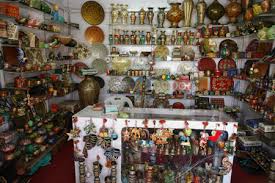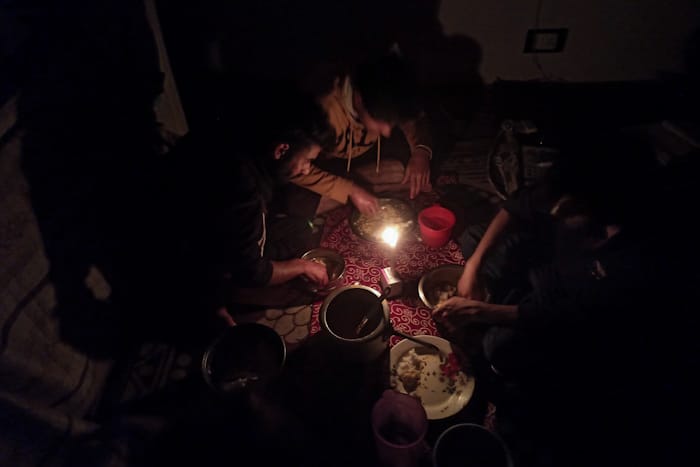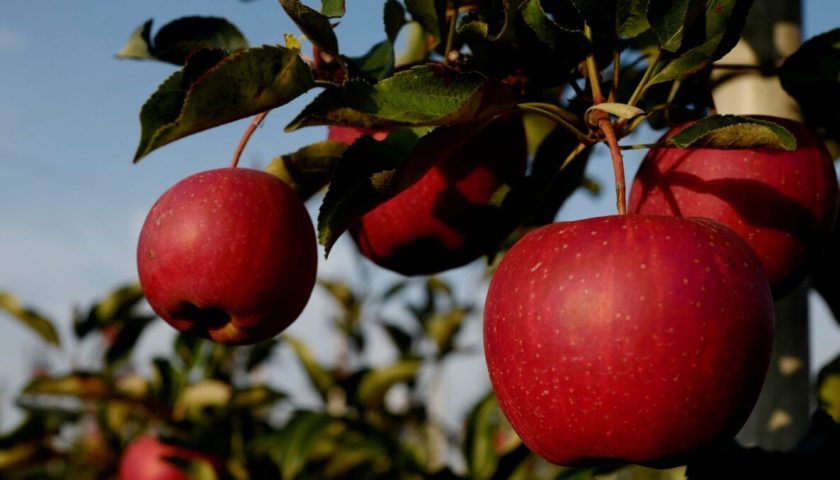Despite the Finance Minister’s promise of keeping Kashmir handicrafts tax free, the government has brought it under the new Goods and Services Tax (GST) regime.
In GST list of goods and services, handicrafts have been taxed at 12 percent and come under Integrated State Goods and Service Tax (IGST) category.
According to the Handicraft department, Jammu Kashmir has 20 lakh artisans, who would be impacted with this decision.
Noted Kashmiri economist, Nisar Ali said, “Bringing the handicrafts under taxation will be a big jolt to the already declining industry.”
He said the government should not forget that it is a poor-man’s industry and not a capitalistic industry.
The artisans associated with this cottage industry already earn peanuts and taxing it would further reduce their income.
“The middleman will further decrease the wages of artisans in some cases and in some cases burden will be shifted to artisans,” Ali said.
According to Industries and Commerce department, handicrafts industry recorded a production of Rs 2650 Crores in 2016-17 in Jammu Kashmir.
There has also been an export of Rs 1151.12 crore during the same year.
“Bringing handicrafts under the ambit of taxation will not directly affect artisans but yes it will indirectly leave a deep impact on this industry,” Deputy Director Handicrafts department, Zeenat Ara said.
She said the industry was losing its vigour and needed a special attention or else Jammu Kashmir would lose this ancestral gift.
“We need to appoint Rehbar-e-Dastakar on the same lines as the government has done in the education and health sector so that we can promote and improve the deteriorating health of handicrafts in the State,” Ara said.
According to her, artisans who were affected during 2014 devastating Kashmir floods are still in distress and have not come out of the loss they suffered.
Since 1975, the Handicrafts department received very little attention from the government.
“In 1975, government sanctioned 553 centres across the State to promote and develop handicrafts and since then it was never enhanced,” a senior officer of the Handicraft department said pleading anonymity.
When Jammu Kashmir was surfing through the turmoil of 1990s, it was this industry which helped the State’s economy survive and even during hartals it was this industry which provides livelihood to most of the population.
Commissioner Secretary Industries and Commerce department, Shailender Kumar said, “The department is not satisfied with the decision of taxing handicrafts and we have raised the concerns with the State government and Government of India.”
He said when the State government raised the issue with Union Minster of Textiles, Simriti Irani, she agreed to redress our grievances.
Kumar believes that the artisans would not be affected, since the ‘provide raw material, pay wages and take away goods’ model is in practice in the State’s Handicrafts sector but accepted that the traders would be affected.
Jammu Kashmir handicraft include Kashmiri carpets, Kashmiri shawls, wood carving, chain stitch, papier-mâché, crewel, Namdha, Phool Kari, Basohli painting, Calico painting and Ladakh carpets.
Rafiq Ahmed, a handicraft trader said, “In past BJP’s Maneka Gandhi played an important role to ban ‘Shatoos shawls’ and now the same party is trying to attack our main source of livelihood.”
Tracing the history of Kashmir handicrafts, noted Kashmiri poet, satirist and civil society activist, Zareef Ahmed Zareef said, “With the start of Muslim rule around 700 years ago, the art of making handicraft was introduced in Kashmir, which flourished from that time and reached its zenith under Sultan Zain-ul-Abdin (known in Kashmir as Budshah).”
He said French were the first from the European continent to visit Kashmir and take Kashmiri handicrafts to France but Britishers introduced Kashmiri craft at the global stage.
Expressing concern over the plight of this industry, Zareef said this Kashmiri handicrafts were on decline as the quality had degraded over a period of time.
“Brokers damaged this industry with their behaviour toward artisans and by never passing benefits to the artisans,” he said.
Zareef said during the British rule in India, the demand for Kashmir crafts was 20 times higher than production and handicraft workshops could be found everywhere in Srinagar downtown and now hardly one is found.
A senior officer of the Finance department pleading anonymity said, “According to JK’s GST law, the finance minister is empowered to use veto in the GST Council but in reality the last decision will be of the council.”
A senior officer of the Excise and Taxation department, wishing not to be named, people who sell their products in different parts of India would have to pay a tax of 12 percent which would be shared between the two states and Government of India.
“But those who export the handicraft product to foreign countries will be exempted as per the Constitution of India,” he said.
The officer said the government was of the view that these products were high valued products and there would be no effect on the production.
The category, according to the officer, that would be affected are artisans who themselves sell the product and the small scale vendors who sell their products in different Indian states during winters.
Kashmir handicrafts to incur 12% GST






